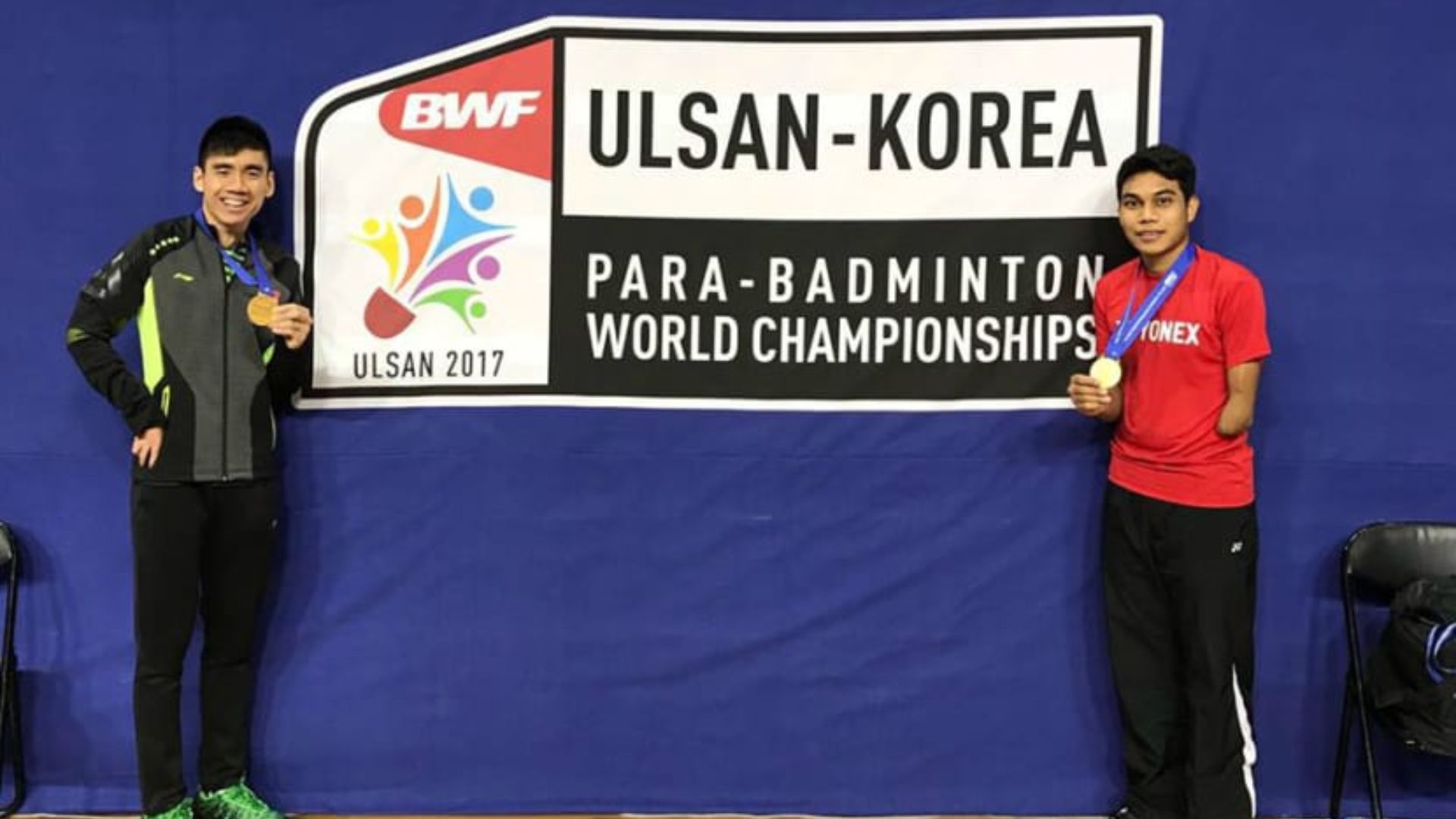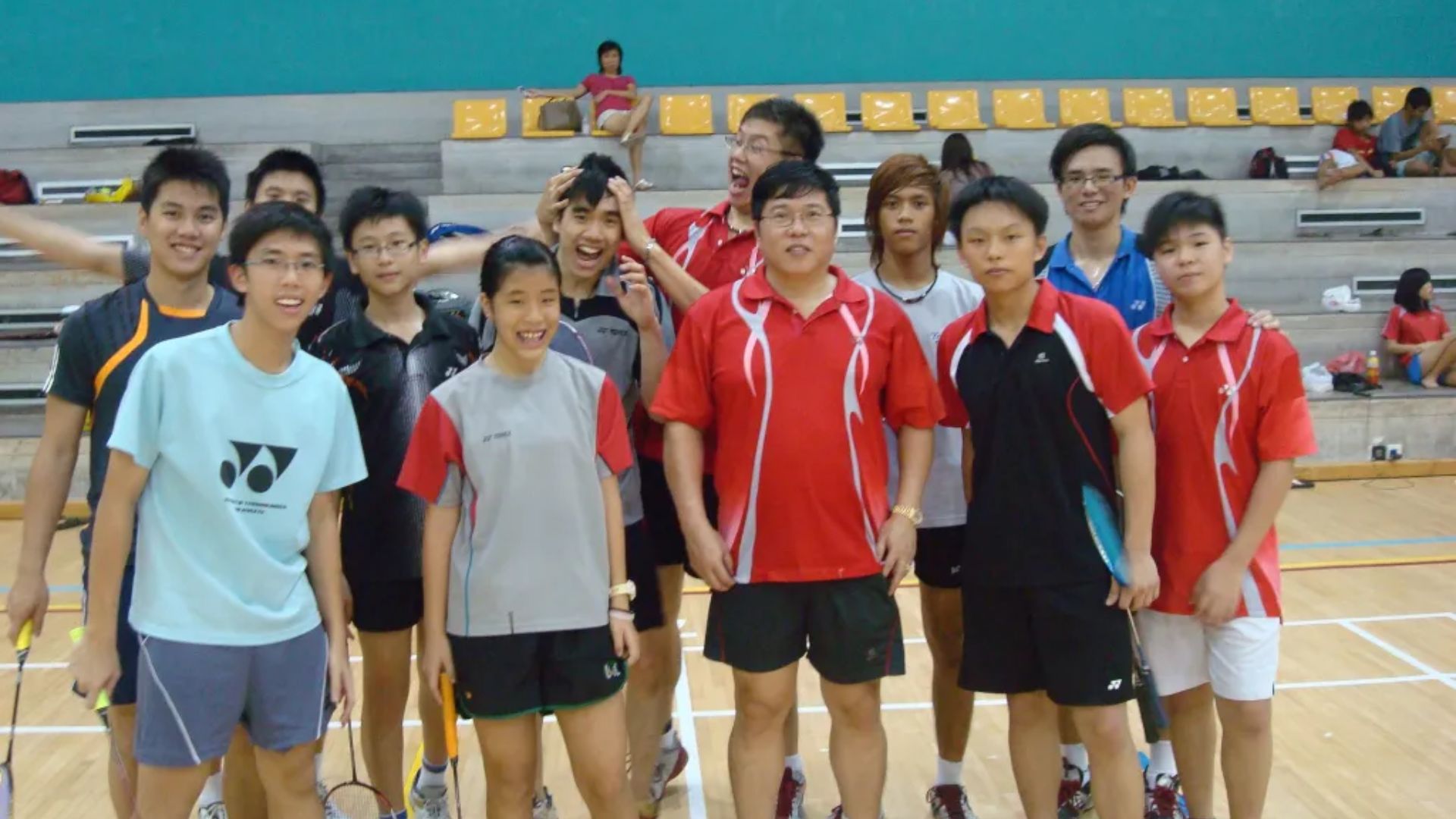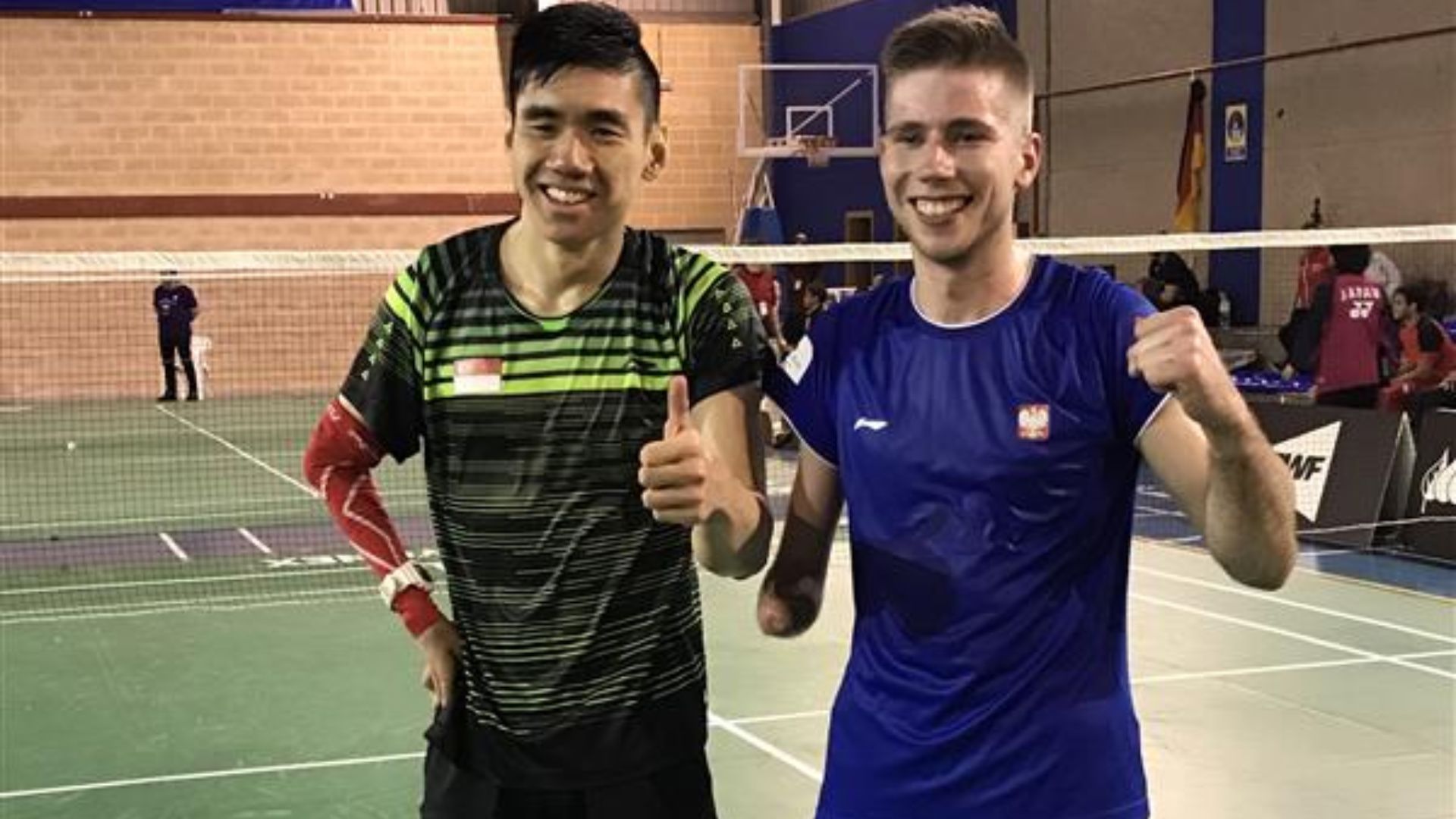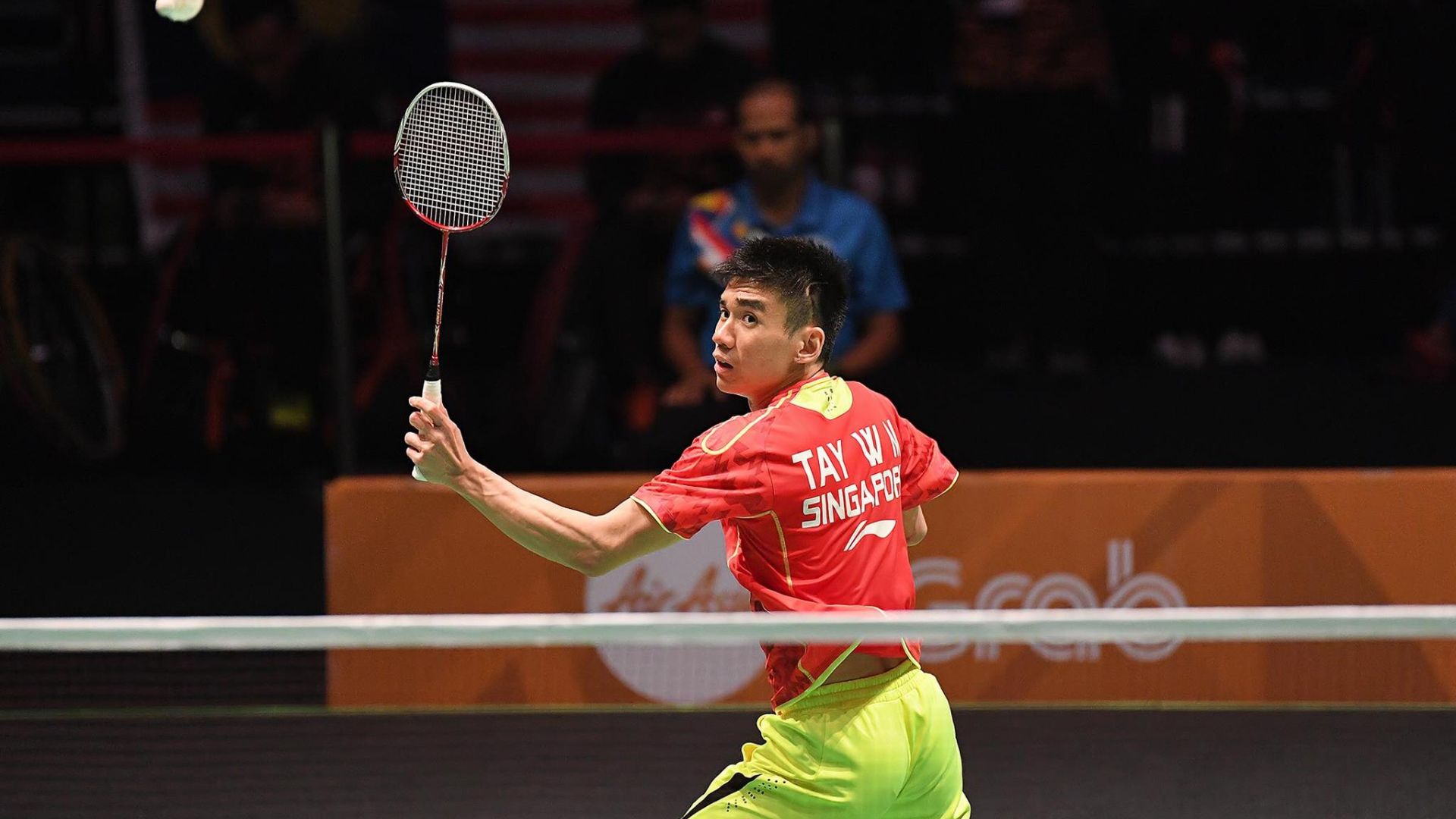Para shuttler Tay Wei Ming’s passion for the game of badminton and his passion for gold at the Paralympics in Paris drives him to raise his own funds to pave his way towards his target.
“If you don’t try, you would never know,” he tells TheHomeGround Asia.
To keep his dream of competing at the highest level — the Paralympics — alive, Tay is hoping to raise enough funds to participate in as many international competitions as possible to secure a qualifying spot.
“The year 2023 will be quite crucial because most of the competitions will be hosted during that period of time. The main objective is always to accumulate points, as many as possible. I heard there isn’t any increase in the number of participants in my category between Tokyo 2020 and Paris 2024, so I would assume that only the top eight in the world will be able to qualify for the paralympics in 2024,” he says.
Tay also adds that it will be tough as all the powerhouses in his category are in Asia.
“We have players from Indonesia, Malaysia, Japan, and even Chinese Taipei. I would say maybe 70 per cent of the top eight in the world are in Asia, making it even tougher to qualify. Moving forward, I need to source for funding and to go to as many competitions as possible. This is my top priority right now,” he adds.
First to be crowned World Badminton Champion
Before Singapore shuttler Loh Kean Yew became a household name when he was crowned world champion at the 2021 Badminton World Federation (BWF) World Championships, Tay’s world title was the first in the sport for Team Singapore’s able-bodied and para athletes.

“The world champion title was in 2017 and it was for the men’s doubles,” says Tay, 34.
But going into the Badminton World Federation (BWF) Para-Badminton World Championships of 2017, held in Ulsan, South Korea, Tay was more focused on the men’s singles.
His pairing with Indonesia’s Suryo Nugroho was an 11th hour pairing and “it was the first time I paired up with him”.
“We didn’t know each other except through the circuit, because we were playing in the same category – the men’s singles. … The opponents we faced were world No. 1 Malaysians Cheah Liek Hou and Hairol Fozi Saaba, so we were pretty shocked when we took down the titleholders. I took a few hours to realise that I had become the world’s double champion,” he says.
“Our partnership was a great one. I was pretty aggressive at the front and he was more a back-court person, doing his smashes. He’s a right-hander and I’m left-handed so we complemented each other,” Tay says, adding that the only regret he still has was not filming the match.
While the title does put a little pressure on Tay, he says he is looking at it as “more of a morale booster because my main target is still the singles world champion, so I use it as a motivation for my daily training”.
Eating, breathing and living the badminton dream
Tay has a condition called Erb’s palsy that arose due to trauma during his birth, and it affected the growth of his right hand and caused nerve damage.
Bullied often as a child, Tay only found confidence and purpose after picking up badminton at the age of nine.
“My parents played sports regularly but as leisure. I remember that there were four sports — badminton, cycling, table tennis, and swimming. We would have this routine during weekends. After dinner, we would engage in one of these four sports. We had one badminton court downstairs and one table-tennis table at a block nearby and we would go practice,” he recalls.
Tay says he developed an interest in badminton because “I love the adrenaline rush and also, the challenges that I face on the court, such as moving your opponent all around the court”.
“Most importantly, badminton is quite a balanced sport because it keeps not only your upper limbs active but also your lower limbs. And generally, it’s a sport that relies on one arm more than the other. You only need one arm to grip the racquet so I decided to progress in badminton,” he says.

Tay reveals that he almost did not get to play badminton as a co-curricular activity (CCA) in school as badminton was the most popular sport then and there were only two spots left on the school team.
But it was the teacher in charge of that particular CCA, “His name was Mr Chin,” Tay says, who noticed how passionate Tay was that he decided to put his name into the last available slot for the team.
“You could say I was a late bloomer. I only had proper training when I was 15. (That was) when my school employed a legit badminton coach. His name is Louis Ong and I was amazed by his strokes, especially his backhand stroke which landed the shuttlecock all the way to the baseline on the other side of the court. Another thing was his build. He was on the bigger side, yet he could move around swiftly,” Tay adds.
Inspired, Tay decided to take on the sport competitively. His first major games was the fourth Asean Para Games in Thailand.
“With the help of SDSC (Singapore Disability Sports Council), I managed to participate in that competition. It was quite an eye opener. I didn’t know there was wheelchair badminton. I didn’t think people with more severe upper body impairments are able to play badminton that well. I was definitely more nervous and excited,” he says.
But that was not his favourite game.
“It was the Spain International Open in 2018. This match was pretty tough and the opponent I was facing was one of my close friends, Bart (Bartlomiej Mroz) from Poland. Our rivalry is such that every time we met on the court, it was usually a close fight, a very intense kind of match, the kind that would end in three sets of rubber games,” he says.

“I remember one particular badminton shot. I was in front of the court and he suddenly flicked (the shuttlecock) to the back of the court. I couldn’t get to the shot in time, so I had to do a shot that I seldom used and I eventually managed to get the shuttlecock across the court. He managed to take the shot, but he lifted it out of the court. So that was also one of the chances that I was able to execute that shot successfully. … That game was intense. It was a rubber game, and the score was 19-21,” Tay replays the game, shot by shot.
The long the journey to Paris
With his sights on Paris 2024, Tay says he has to be prepared not only financially but also mentally and physically.
He just had spine surgery in June and is getting back into form for his game. A bulging disc in his lower spine was causing pain sensations through the lower left side of his body.
“There was no numbness and the pain was manageable. I had this for about a year or so but it didn’t really affect me during my training and or competitions. When I went to my first competition this year, which was the Bahrain International, the pain worsened on the last two days and I was actually slanting sideways while walking,” he says.

“I told myself that I need to fix this issue otherwise I would be walking sideways even in my daily life and I would not be able to compete. … On 8 June, I had surgery at the Changi General Hospital (CGH). I was very lucky that the recovery process was very smooth, very fast and short. There was a lot of intensive rehabilitation and physiotherapy. After the op I am now 100 per cent pain free,” he says.
Tay is continuing to build on his physical strength as well as his mental tenacity. He is working with his two coaches, whom he knew since they were students at the Nanyang Polytechnic.
“I am very comfortable working with them. We met during our Nanyang Polytechnic days where we were actually in the same badminton school team. Then after that, as I progressed to compete competitively, while the two of them went on to complete their coaching course. … I feel they understand my style of play, they understand my strengths and weaknesses on the court as well, so when I wanted to change coaches at the beginning of this year, they approached me. They had seen that I am still aiming for the Paralympics and wanted to help,” he says.
“Currently, we are trying to work on the physical aspects, how to be stronger. With age, the style of play is rather different. I can’t be playing as fast or as aggressive as a young player. In this circuit, there is always someone who is younger coming into the scene. So I need to be able to know how to change my play to adapt to this kind of high intensity gameplay and my coaches and I are working on this to help me secure a qualifying spot for the 2024 Paralympic Games in Paris,” he says.
And as a full-time independent athlete, participating in international competitions can be very expensive. The cost of each competition will include registration fees, flight tickets, travel visa application, Covid-19 tests, and accommodation. It has been reported that Tay would need to fork out S$64,000 a year and a total of S$128,000 for the two years leading up to the Paralympics.
He initiated a crowdfunding campaign at the beginning of this year.
“It was at GoGetFunding platform. Subsequently, a group of people from SDSC helped me bring my crowdfunding campaign to another level by putting my campaign on the Giving.SG portal. By doing so, it also helps to park my funding under the OneTeamSingapore fund for a $1 for $1 funding. The amount we raised will be topped up by the government. No doubt the amount is still far from the target, but it’s really very good,” he says, adding that he is also “actively looking for sponsorship.
To his young fans and those who want to emulate him, Tay says there is never a shortcut to achieving a title or an Olympic medal.
“This journey is never easy. As a badminton player, our training is never easy. You must be able to persevere and continue that journey. You need somebody to groom and partner you throughout this whole entire journey,” he says.
And to the young para shuttlers, Tay says, “Don’t be discouraged if you lose a match, even your first match don’t give up. Being a person with a disability can have certain disadvantages but there are people around you who are also doing the same thing. They never give up even if they fail for the first time and you shouldn’t either.”
RELATED: Passion for gold: Para archer Nur Syahidah Alim aims for Paris 2024
Join the conversations on TheHomeGround Asia’s Facebook and Instagram, and get the latest updates via Telegram.














